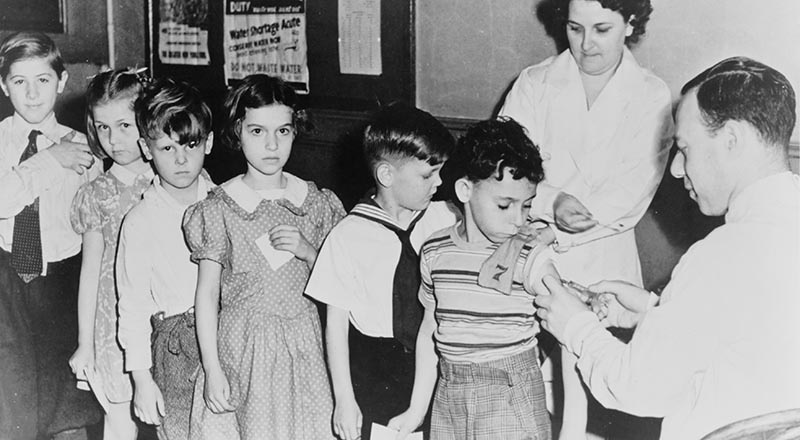History of Vaccines
Vaccines have been with us for centuries. Their history in the modern era dates back to the late 1700s, when Edward Jenner, an English physician, observed that dairymaids who had had cowpox did not contract smallpox. Jenner inoculated an eight-year-old boy with matter from cowpox, hoping to prevent him from contracting smallpox. The experiment worked, and the very word ‘vaccine’ – deriving from the Latin vaccinus, which comes from vacca ‘cow’ – is a testament to its success. Since then, the development of vaccines has come a long way and is now an important part of medical history – not to mention, the tip of the modern-day public-health spear.
Vaccines are designed to produce immunity by stimulating the body’s production of antibodies in order to fight off disease-causing organisms, also referred to as pathogens. There are two main types of vaccines: live attenuated vaccines and inactivated (or killed) vaccines. Live attenuated vaccines use weakened forms of viruses or bacteria that can still cause an immune response, whereas inactivated vaccines contain killed forms of viruses or bacteria that don’t cause illness but also provoke an immune response.
The efficacy of these two types of vaccines varies greatly, depending on the specific vaccine and the individual receiving it. Generally speaking, live attenuated vaccines tend to provide better protection than inactivated ones because they mimic natural infections more closely; however, some people may have adverse reactions to live attenuated vaccines due to their weakened state. On the other hand, inactivated vaccines tend to be safer than live attenuated ones, since there is no risk of illness from a dead virus or bacterium.
Modern Day
In recent years, there has been a great deal of debate on the safety and efficacy of both types of vaccines. Proponents point out that vaccinations are incredibly effective at preventing diseases and saving lives; in fact, the World Health Organization (WHO) estimates that roughly 2-3 million deaths per year can be attributed directly to vaccine-preventable diseases. Additionally, supporters contend that vaccinations are necessary for protecting public health by reducing the spread of infectious diseases throughout communities and populations.
On the other hand, opponents argue that certain substances contained within certain types of vaccinations – namely, aluminum adjuvants – can be harmful or even fatal if injected into sensitive persons or administered improperly. They further claim that not enough research exists to demonstrate the long-term effects associated with these substances. Other detractors point out ethical issues with certain classes of vaccinations, such as mandatory immunization laws that have been used to discriminate against certain groups or individuals who may not wish to receive them, while simultaneously ignoring the special needs of those who cannot receive them due to medical reasons such as allergies or compromised immune systems.
At this time, it is difficult to draw conclusions about whether or not all vaccination programs are an unalloyed benefit to public health. Indeed, much more research needs to be done before any definitive statements can be made on this subject. One thing remains clear, however – vaccination remains an essential tool for fighting infectious diseases around the world, and is likely here for good.



GIPHY App Key not set. Please check settings